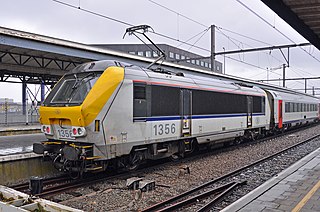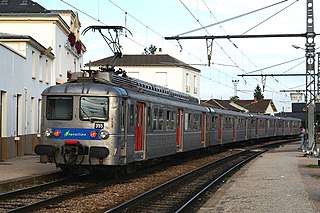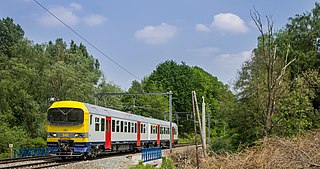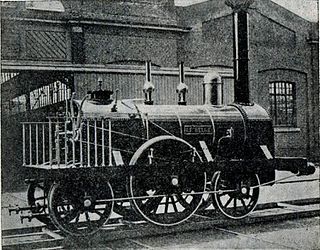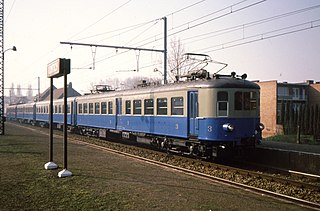This article needs additional citations for verification .(January 2021) |
| NMBS/SNCB Classical twin EMUs | |
|---|---|
 NMBS/SNCB EMU AM 174 in Liège Guillemins Station | |
 2nd class original interior | |
| In service | 1939–2024 |
| Manufacturer | La Brugeoise et Nivelles, ACEC, Ateliers Germain, Usines Ragheno |
| Built at | Braine-le-Comte, Bruges, Charleroi, Mechelen |
| Constructed | 1939–1980 |
| Refurbished | 1999–2008 |
| Scrapped | 1978–2024 |
| Number built | 497 (not in service at the same time) |
| Number in service | 0 |
| Formation | EMC-EMS |
| Capacity | 118 to 185, depending on series |
| Operators | NMBS/SNCB |
| Specifications | |
| Train length | 44.4 m (145 ft 8 in) to 46.575 m (152 ft 9+5⁄8 in), depending on series |
| Width | 2.781 m (9 ft 1 in) to 3.000 m (9 ft 10 in), depending on series |
| Height | 3.767 m (12 ft 4 in) to 4.400 m (14 ft 5 in), depending on series |
| Doors | AM39: Sliding doors Rest: Pneumatic folding doors 4 per side (excl. baggage door) |
| Maximum speed | 130 km/h (81 mph)<b→r/> 140 km/h (87 mph) AM46 + AM66 and up |
| Weight | 98.5 t (96.94 long tons; 108.58 short tons) to 117 t (115.15 long tons; 128.97 short tons), depending on series |
| Power output | 620 to 840 kW (830 to 1,130 hp), depending on series |
| Electric system(s) | 3000 V DC 1500 V DC (Netherlands) Catenary |
| Current collector(s) | Pantograph |
| UIC classification | (A1)(1A) + (A1)(1A) |
| Safety system(s) | TBL1+ (units 642 and up) |
| Coupling system | Henricot semi automatic coupler |
| Multiple working | Within class (all series are interoperable) and with AM75 |
| Track gauge | 1,435 mm (4 ft 8+1⁄2 in) standard gauge |
NMBS/SNCB Classical twin EMUs (also referred by their construction year - AM39 for "Automotrice 1939" up to AM79 for the last units from 1979; or MS39 to MS79 for the Dutch-language equivalent "Motorstel") were electric multiple unit trains operated by the National Railway Company of Belgium (NMBS/SNCB). They were the standard equipment for local trains under the Belgian standard 3000 Volts DC overhead lines, until they gradually replaced by the Class 08 Desiro Mainline EMU's starting from the early 21st century.
Contents
Classical EMUs were originally painted in dark green, with small yellow stripes surrounding the front lights. As those were considered insufficiently visible, the front door was also painted in yellow and the stripes were enlarged.
A subset of 22 EMUs was built with stainless steel body instead of (regular) carbon steel. This remains a one shot trial as the next generations were built with carbon steel bodies.
Another subset of 6 EMUs, built in 1970, were specifically adapted for airport service, with more space between seats and a huge luggage compartment. Although they were operated by railways staff, access was restricted to travellers holding valid SABENA airline tickets with a dedicated platform provided at Brussels Central Station. A blue paint scheme was also chosen to identify those EMUs. These units were retired in 2013.
In 1984, the Belgian Railways introduced a new transportation plan based on fixed-interval timetables (and the closure of many secondary passenger lines) called "Plan IC-IR." A new paint scheme was applied, based on a burgundy red color with a large white line surrounding the entire coaches or EMUs below the windows.
In 1999, classical EMUs built in the seventies were extensively refurbished, the program included comfort upgrade (interior replacement, sound system, closed circuit toilets) and repainting in the light gray livery with blue and red lines under the windows. Few units were still in the older green delivery when refurbished. The last 40 to be refurbished units received extra features (LED information displays, multi-service compartments for bicycles or standing passengers) for suburban "CityRail" (predecessor of the Brussels S Train) services.

















